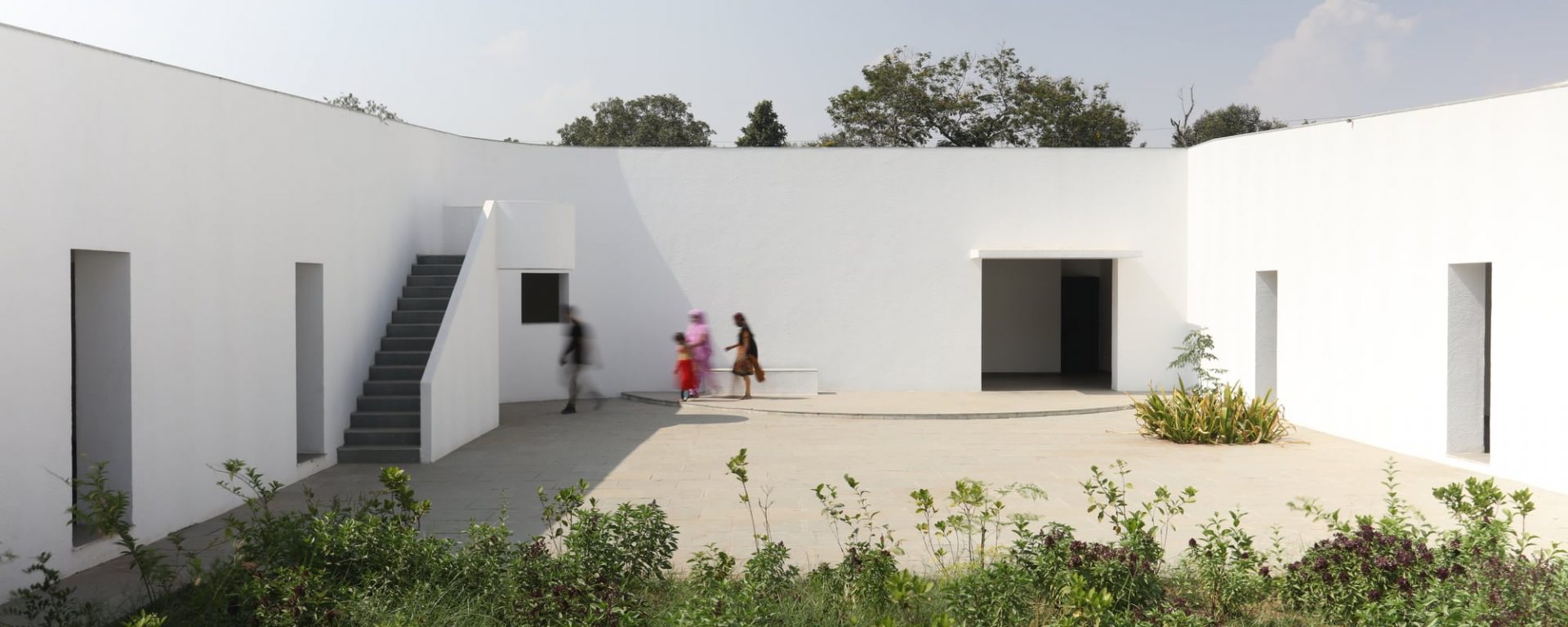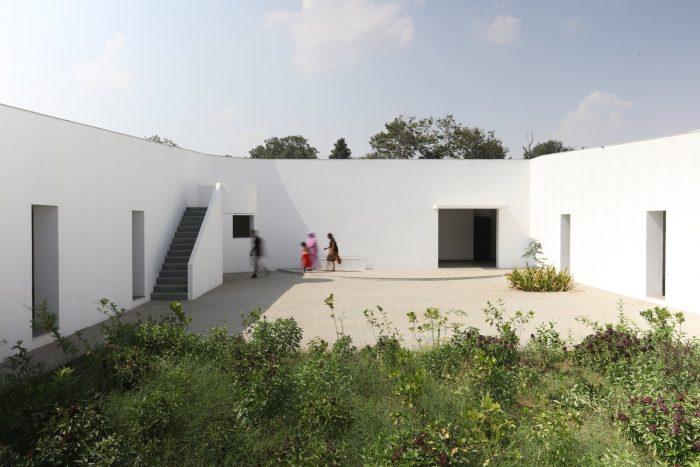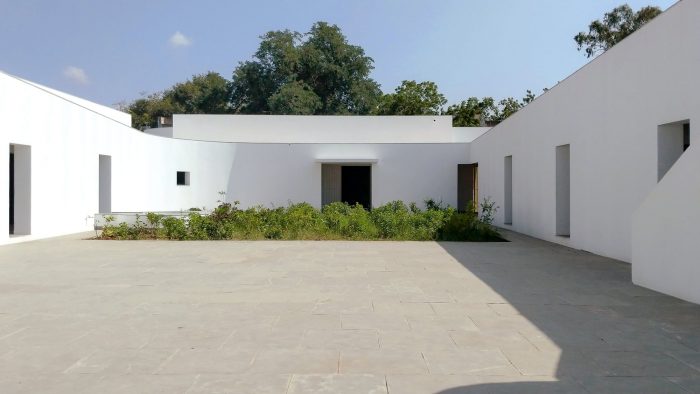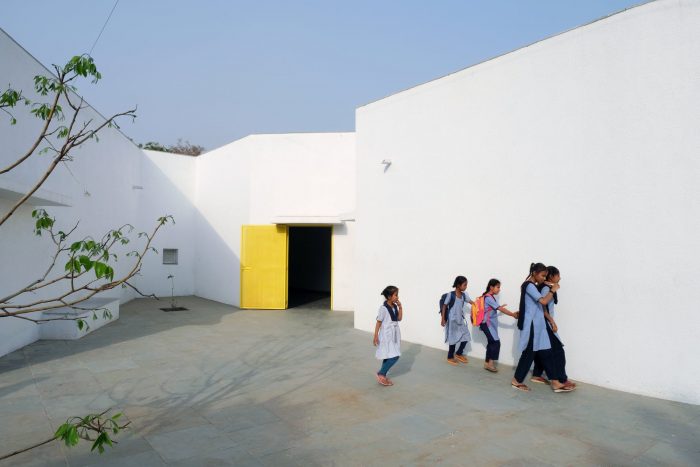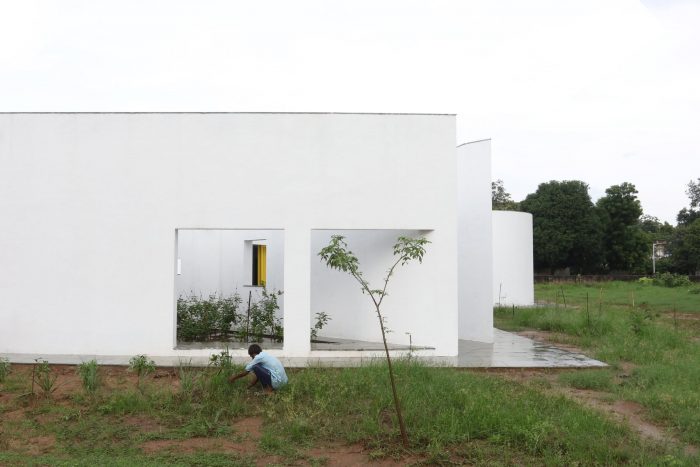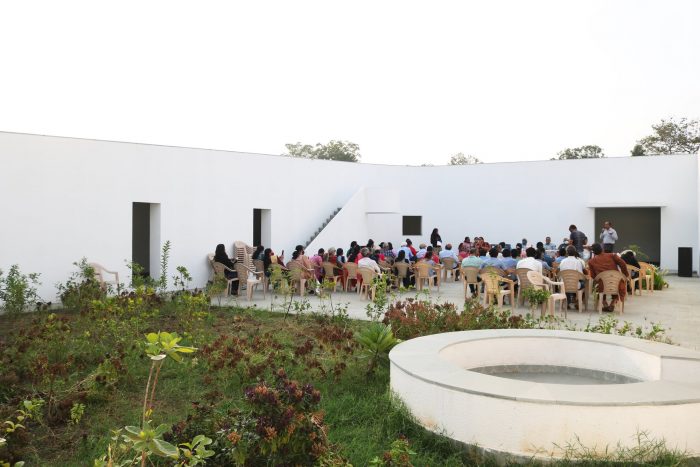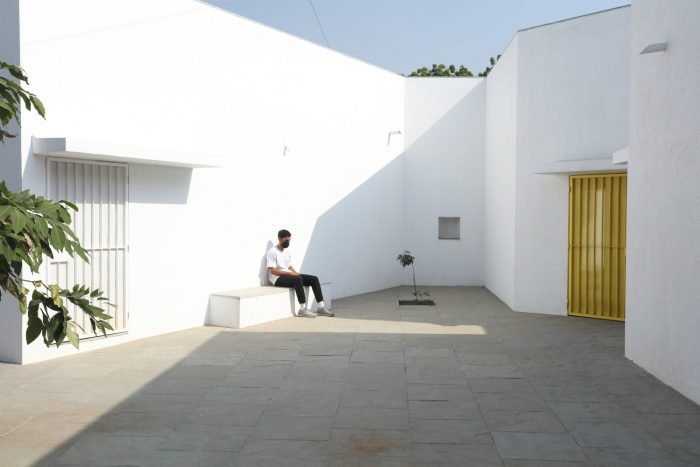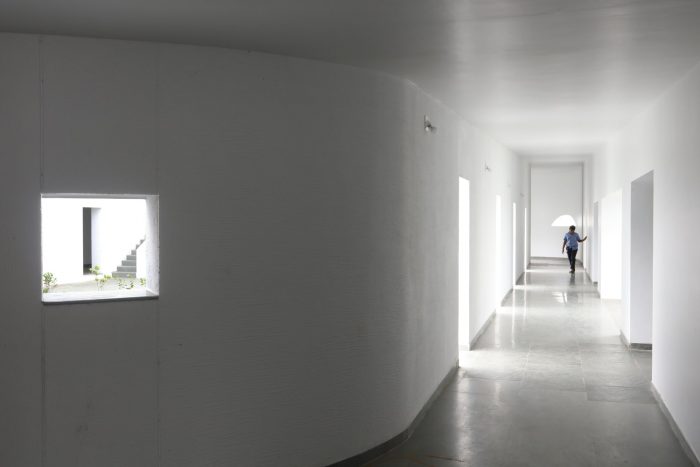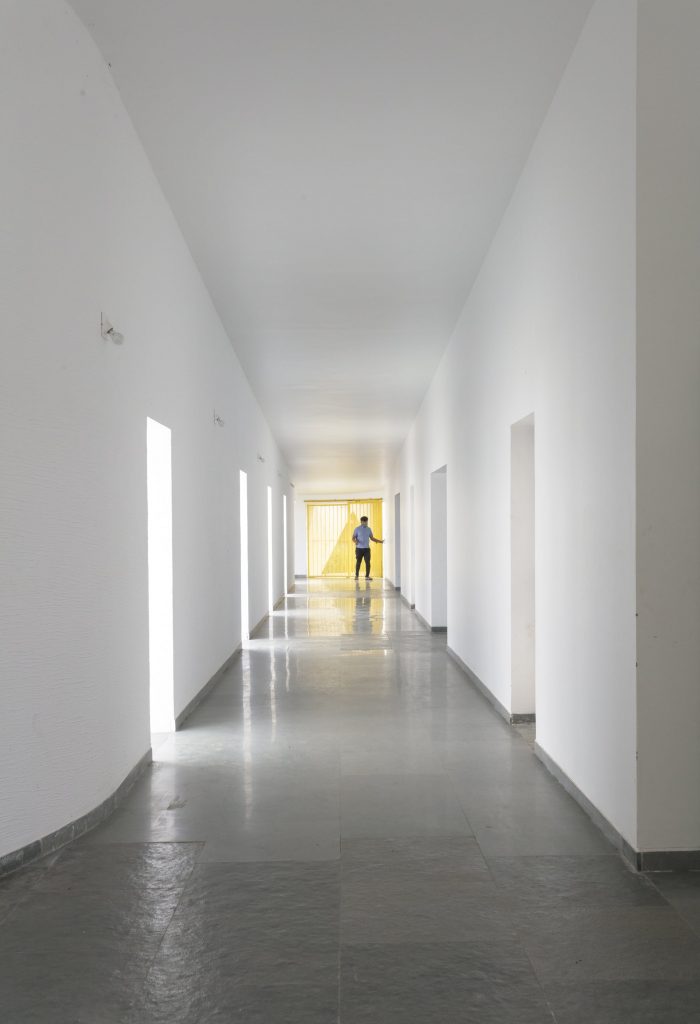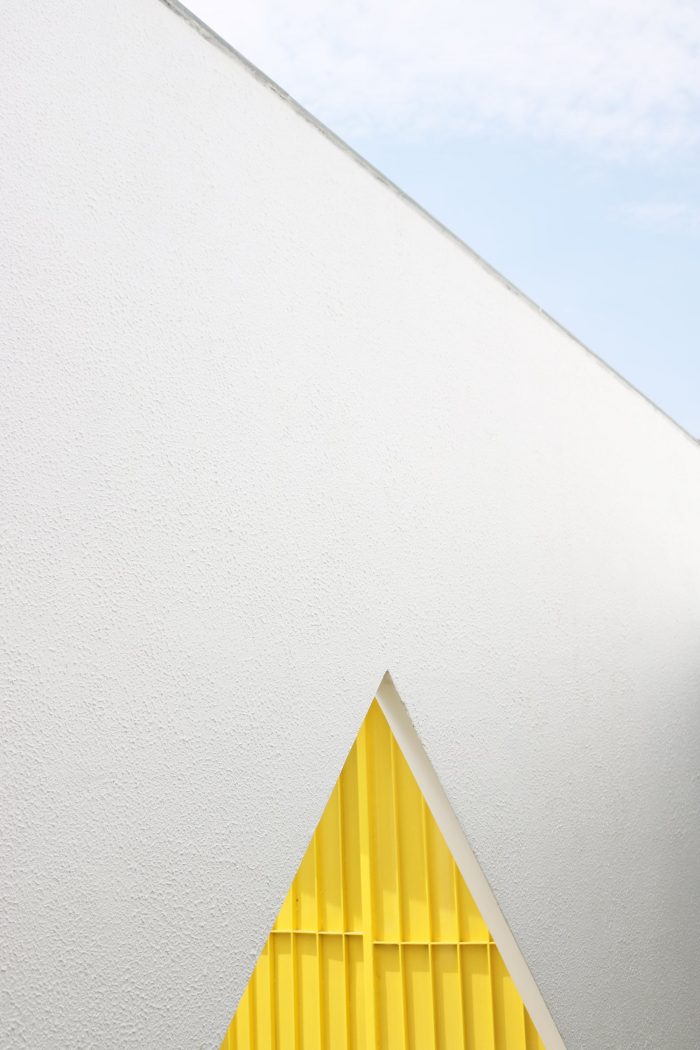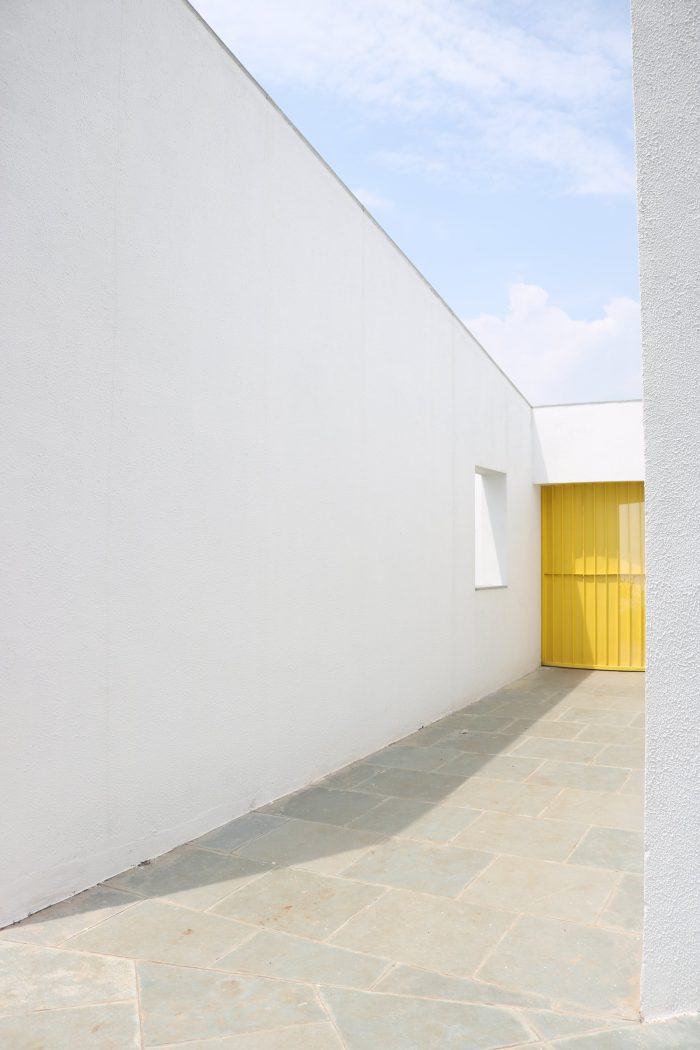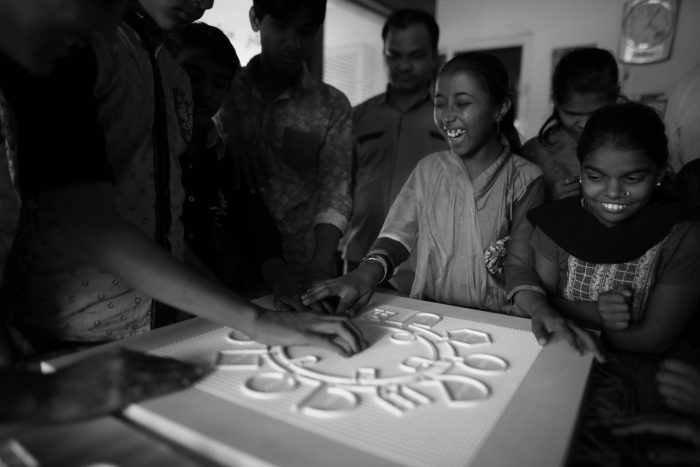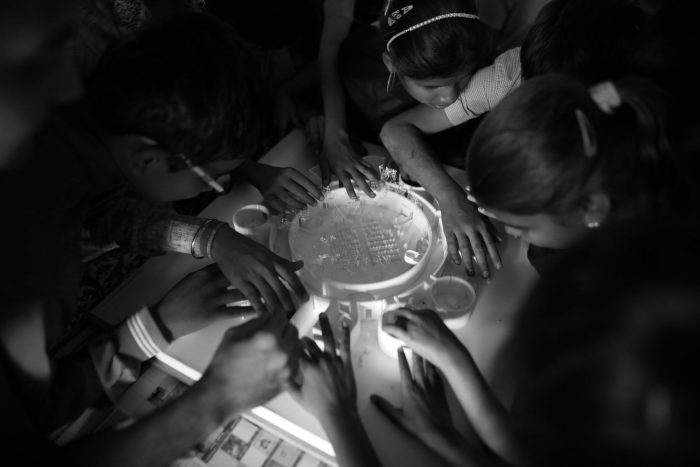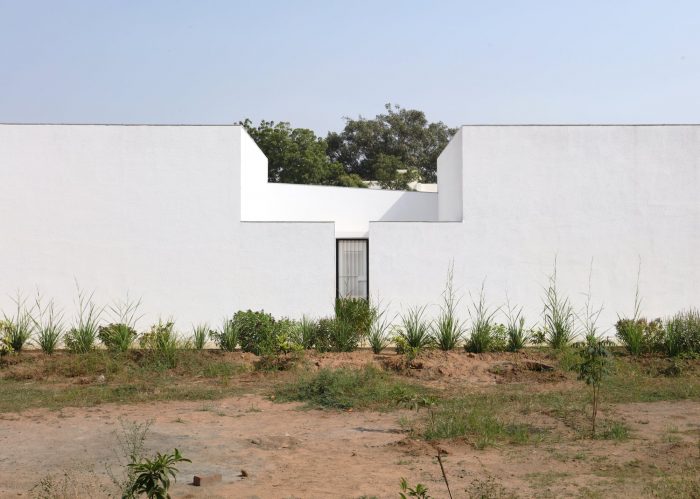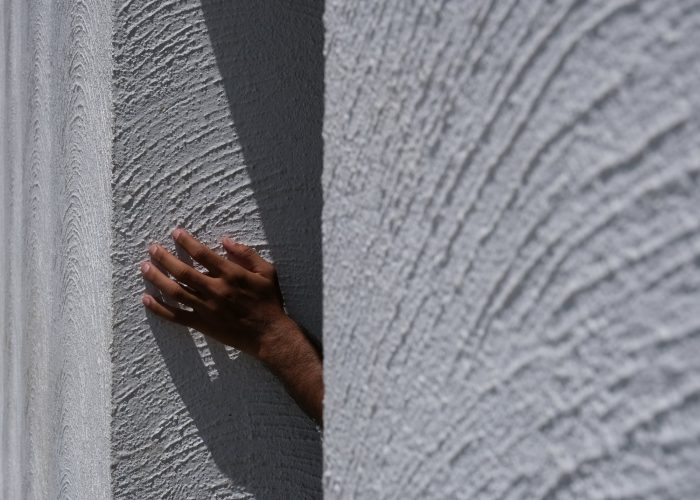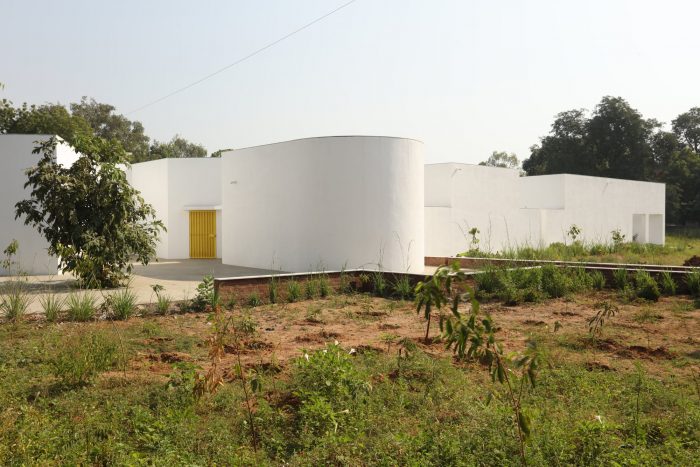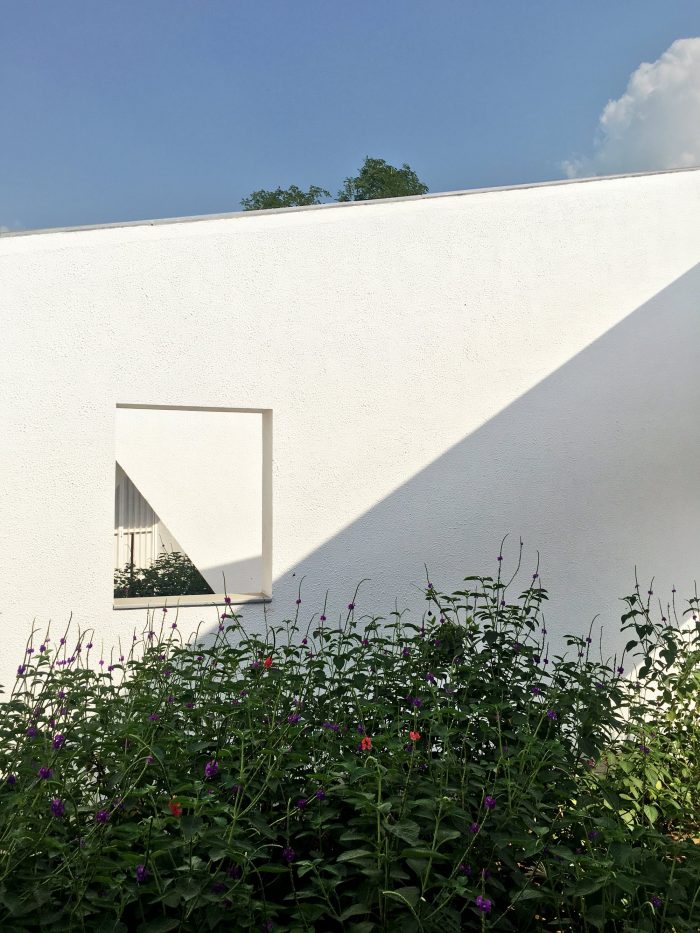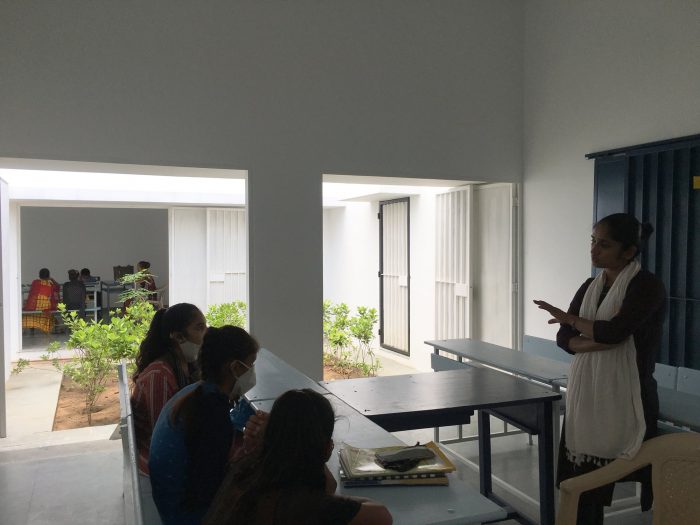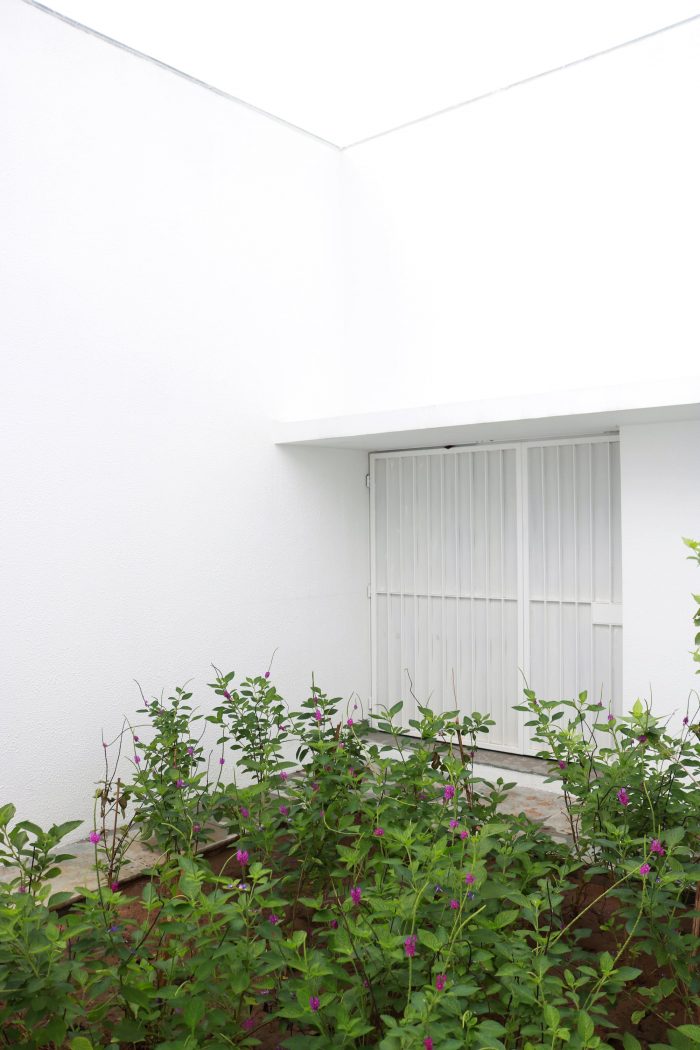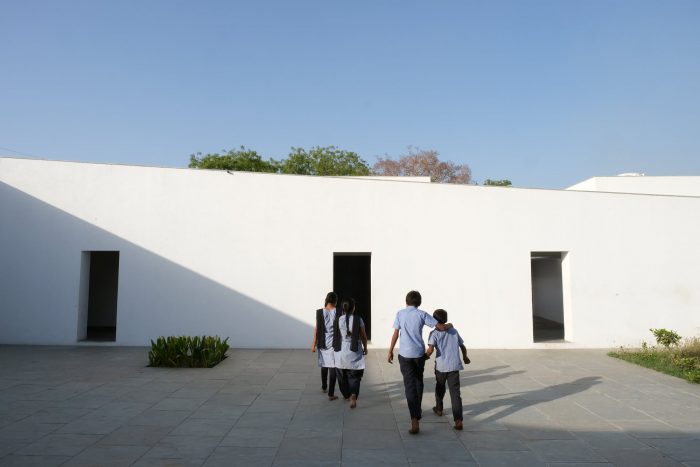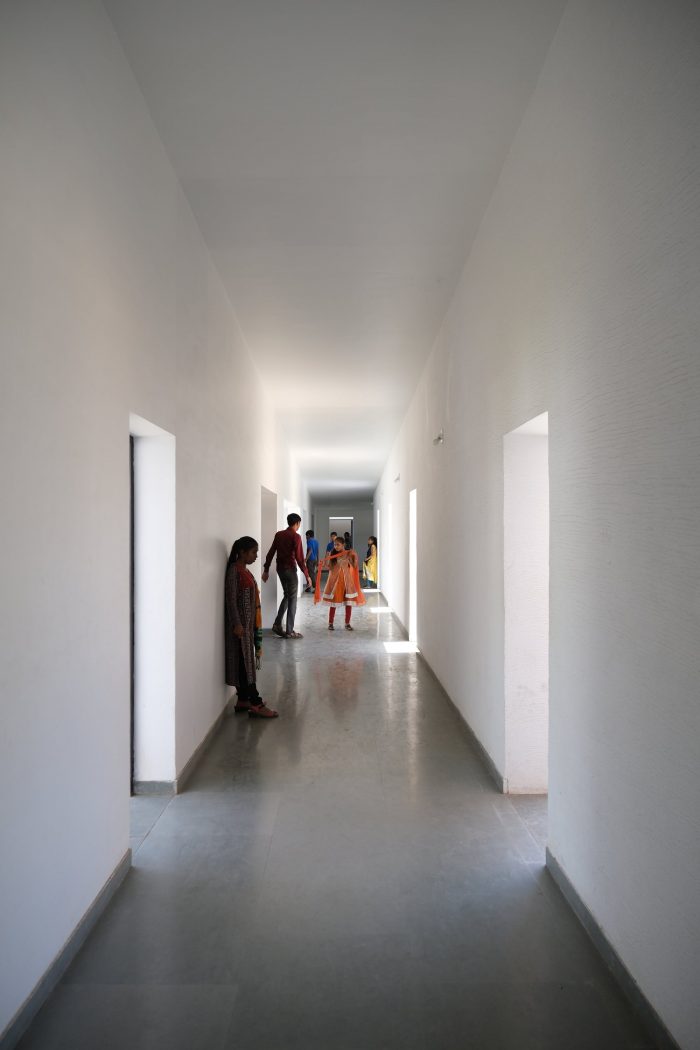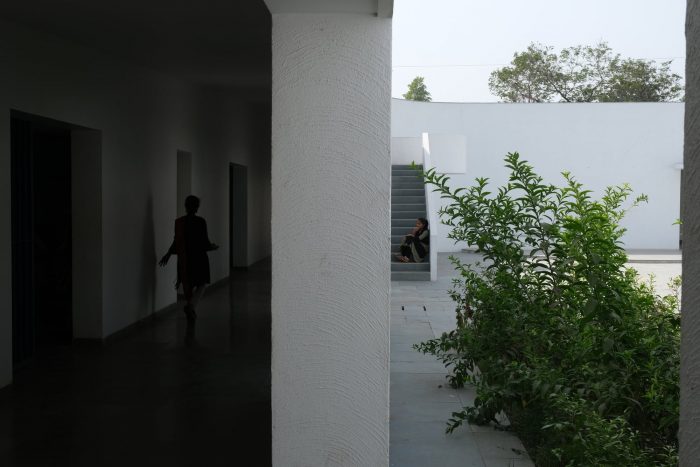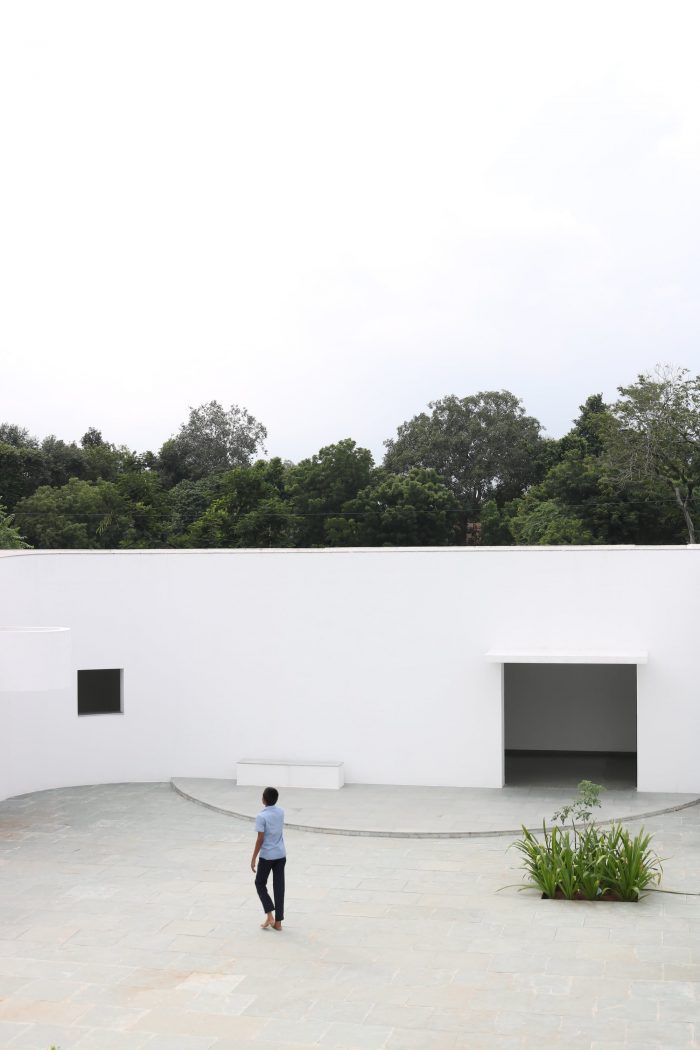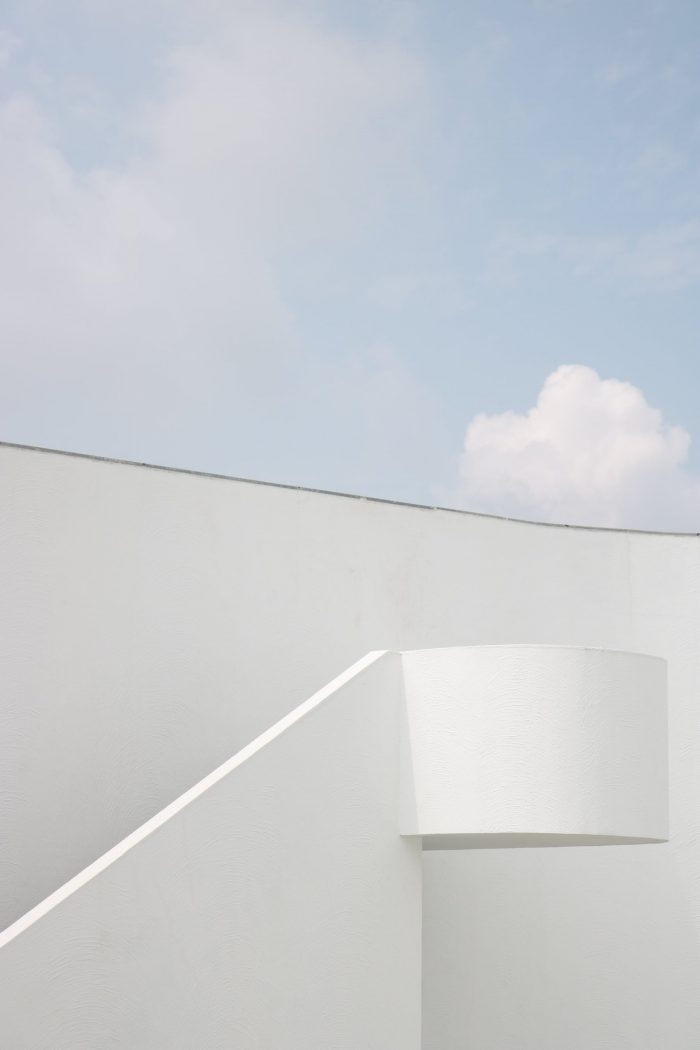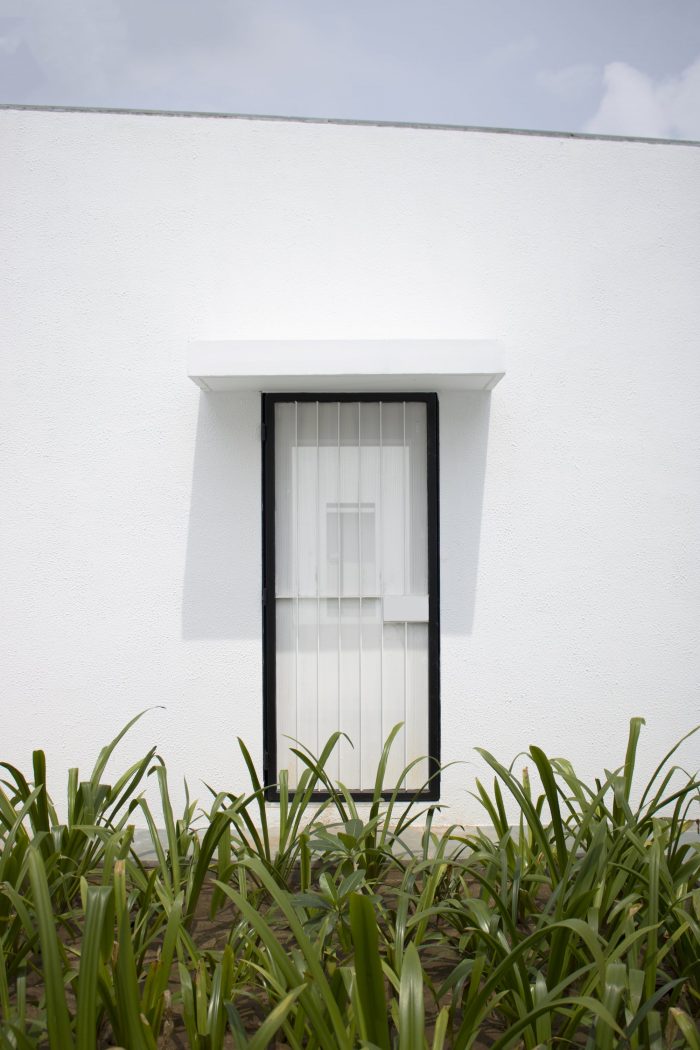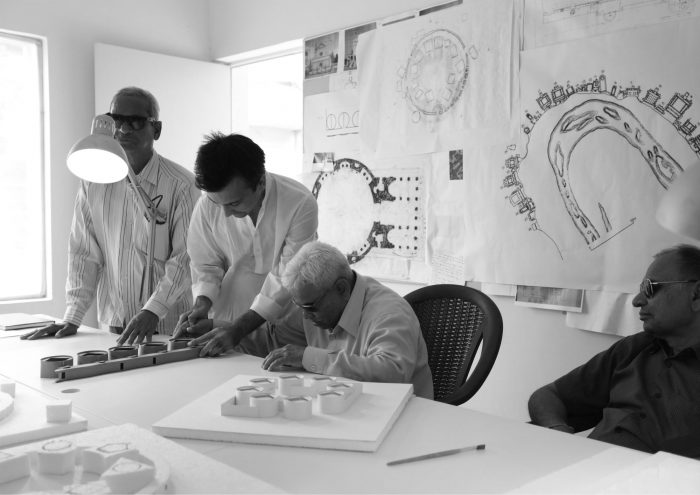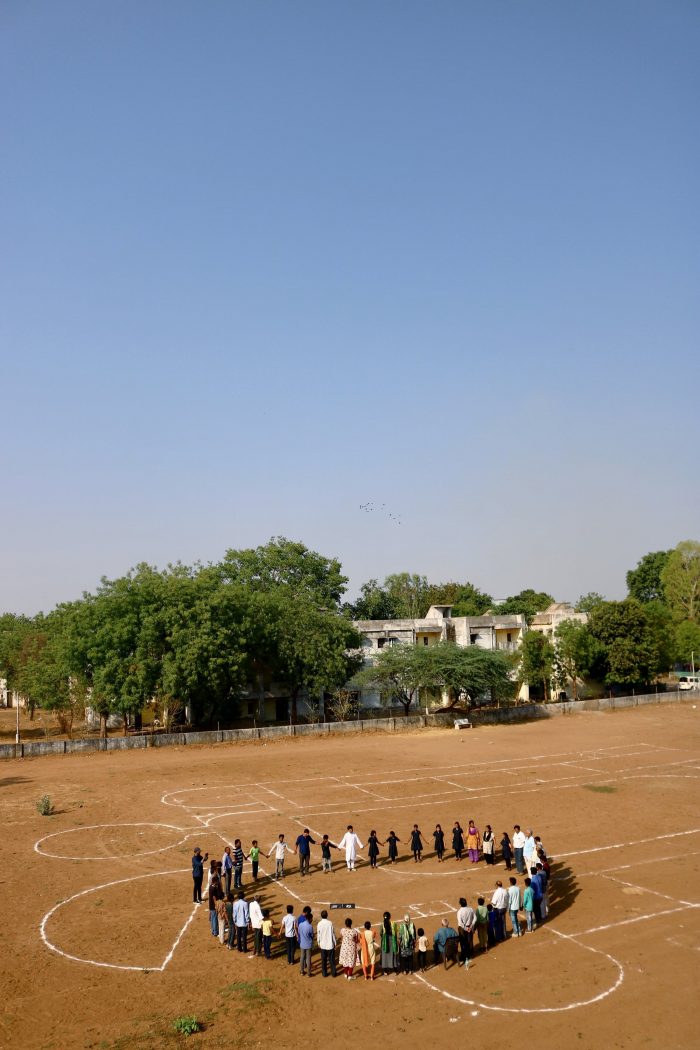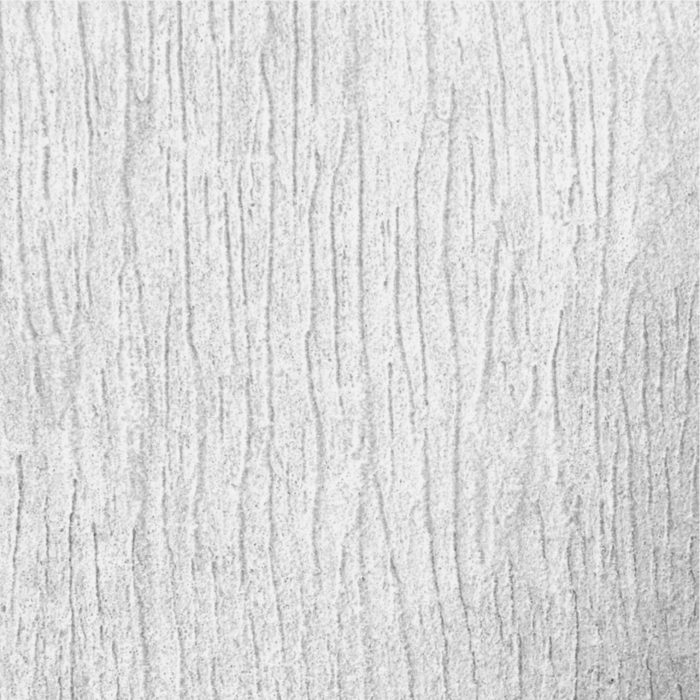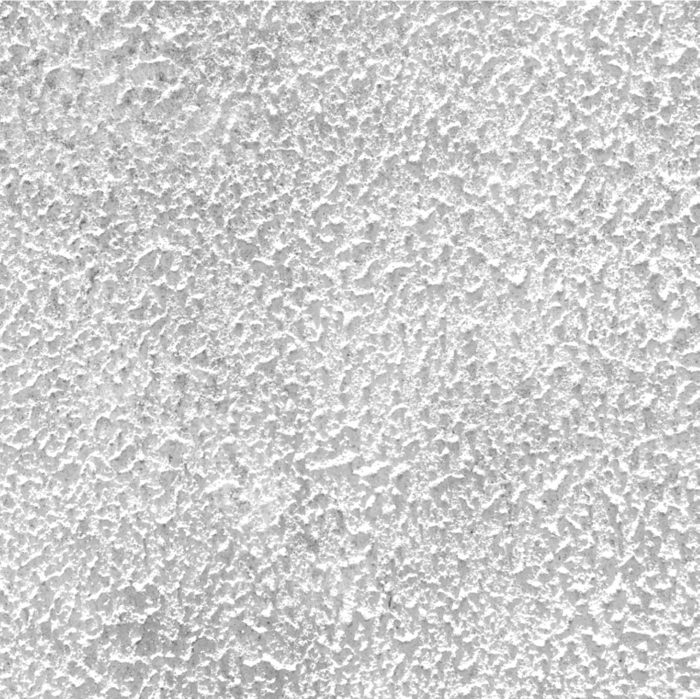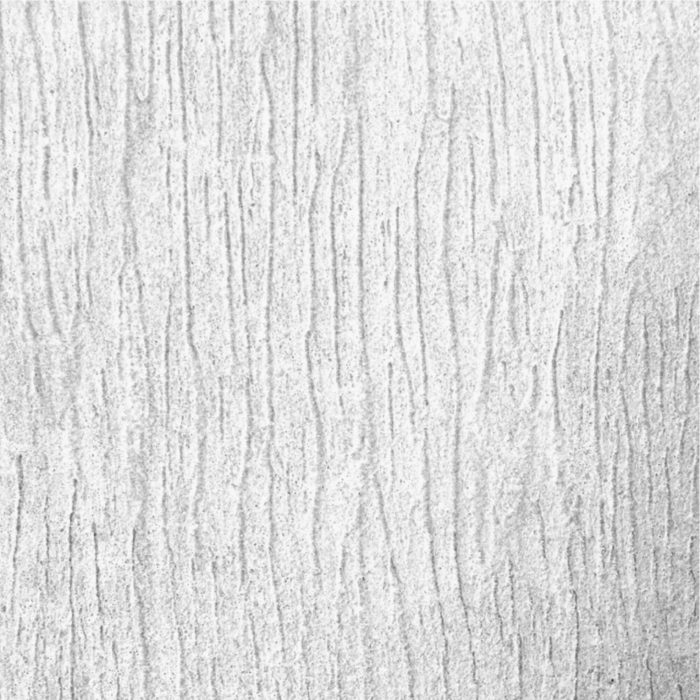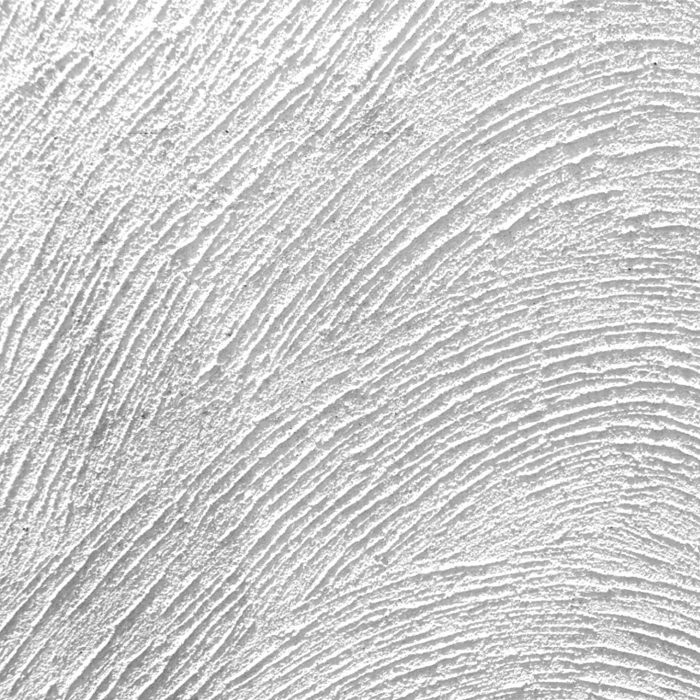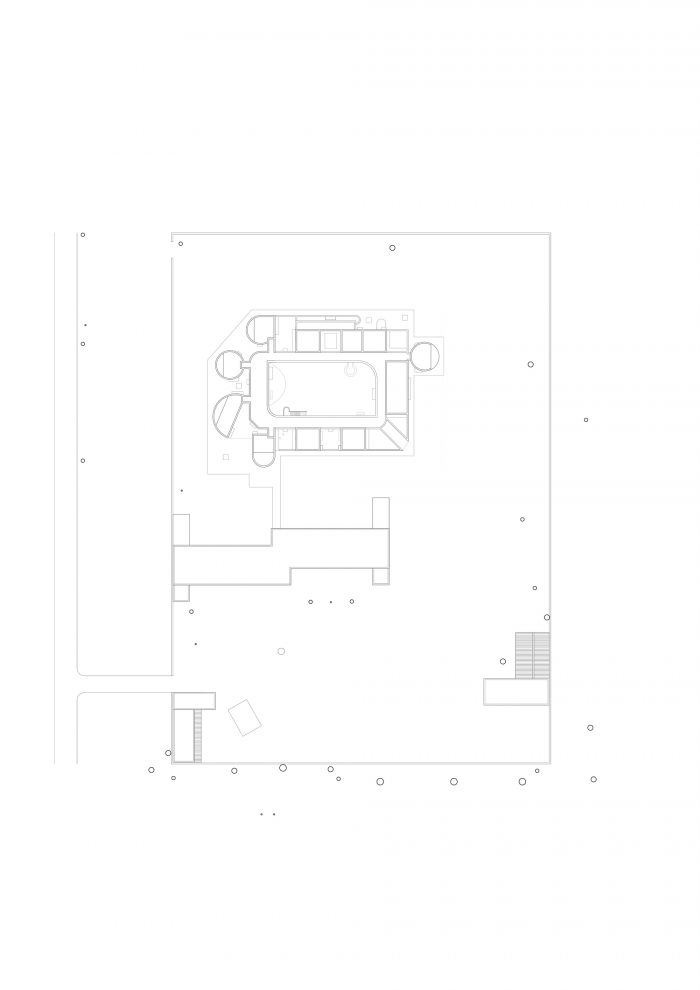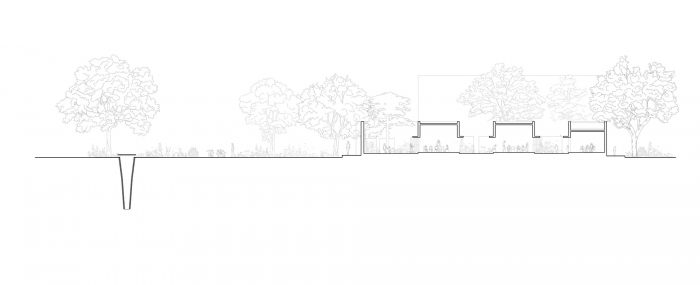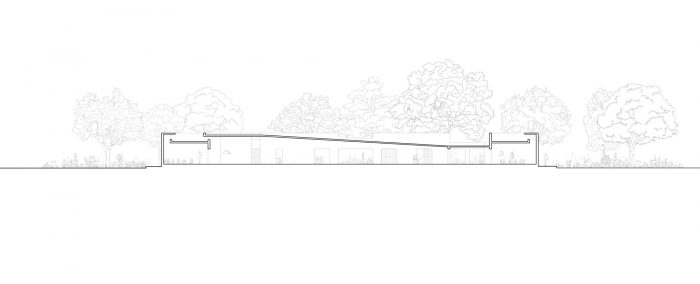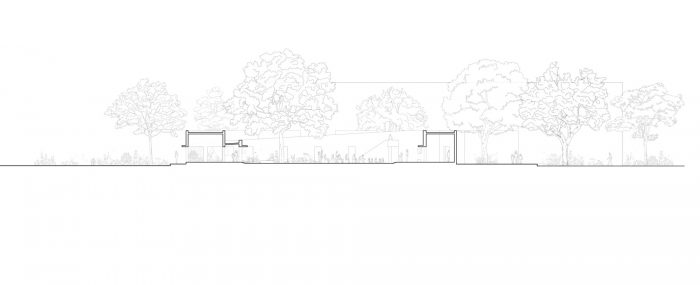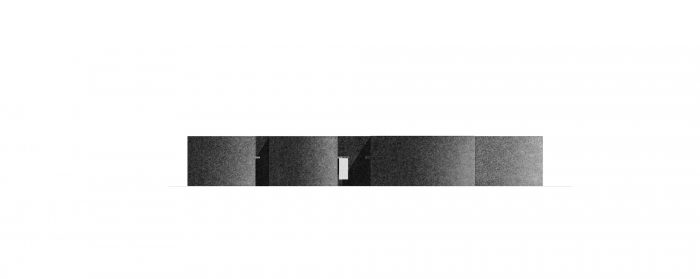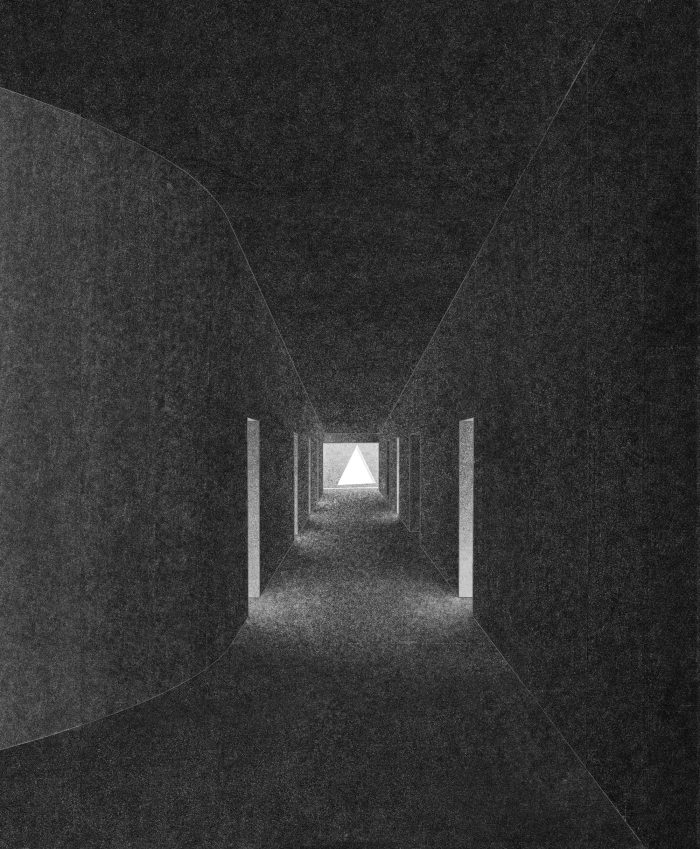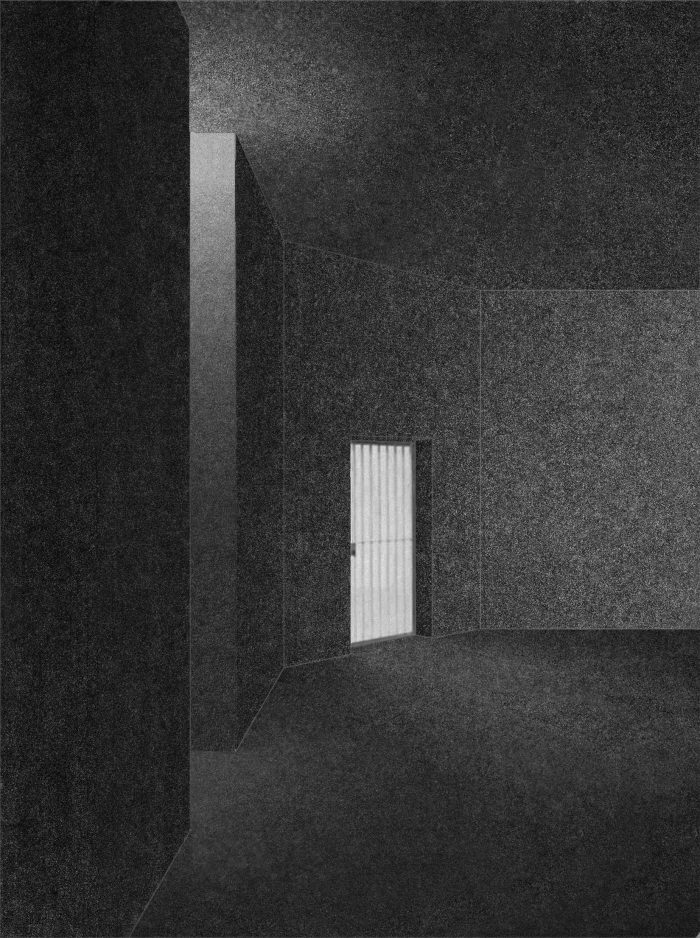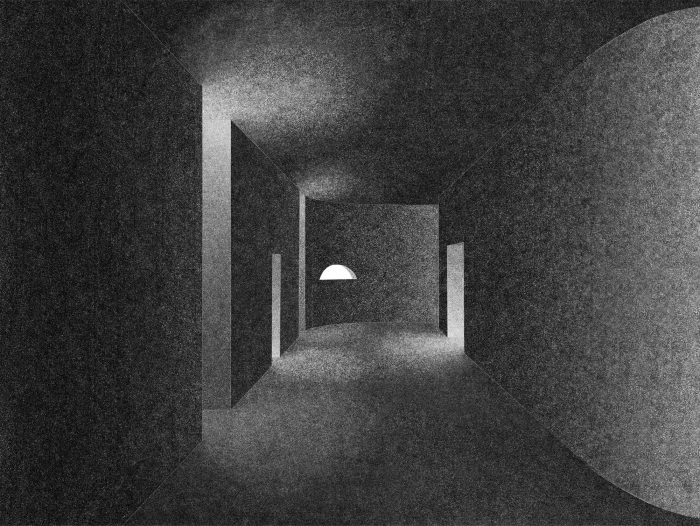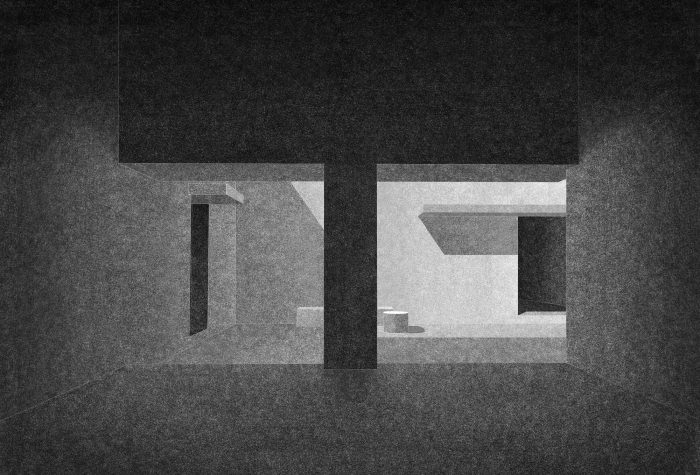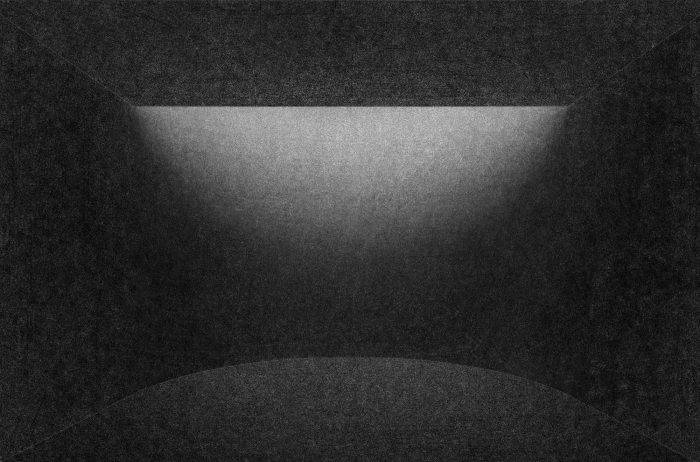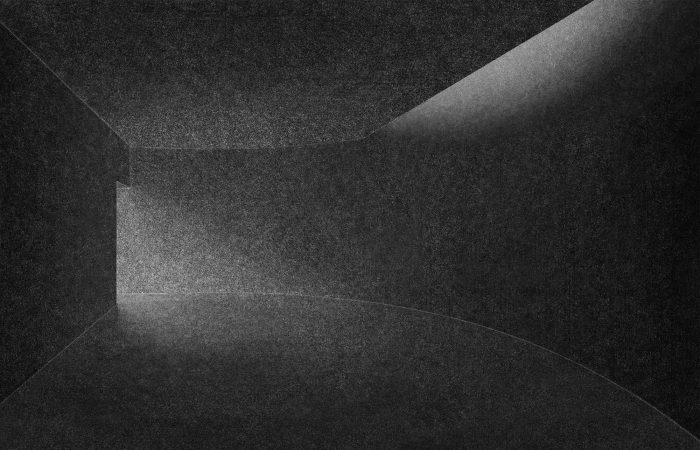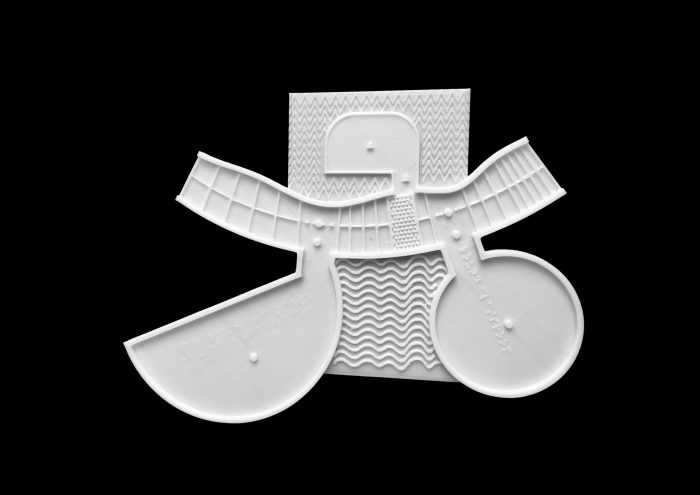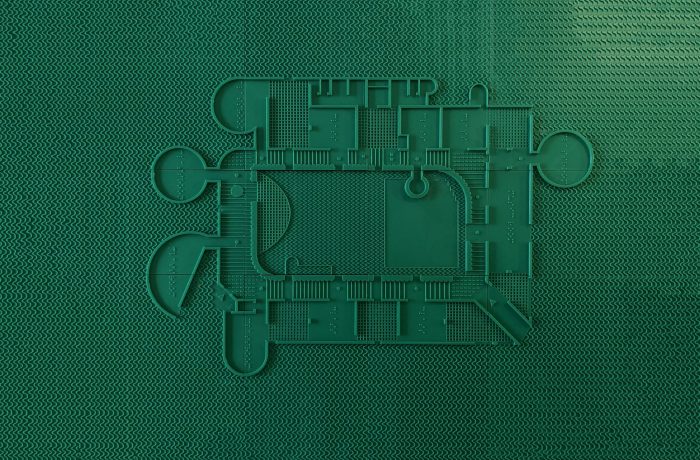甘地纳加尔的盲人和视力障碍儿童学校是为来自古吉拉特邦偏远村镇的儿童设计的,教授们渴望为他们提供更好的教育和社会机会。最初,学校占用了一个现有的建筑,以前是一所小学。一楼被用作学术活动的教室,一楼被用作宿舍。早期,所有的学生都没有足够的空间(每个寝室有12个孩子),也没有能力迎接更多的学生。
School for the blind and visually impaired children in Gandhinagar is designed for children from remote villages and towns in Gujarat and professors eager to offer them a better education and opportunities in society. Initially, the school occupied an existing building, previously a primary school. The 1st floor was used as classrooms for academic activities and the ground floor as dormitories. Earlier, there was less space for all the students (12 children shared in each dorm room) and no capacity to welcome more.
设计–新的教学楼位于现有教学楼的西面,有十间教室,有五种不同的类型,围绕一个中央庭院排列。这个空间提供了一个封闭的外部空间,供孩子们玩耍、表演或庆祝节日。这种简单的建筑类型学使学生们能够创建一个空间的心理地图。角落用光的笔触或衔接的体量来识别,围绕中央广场的走廊每一侧都有不同的宽度和体量。这使学生能够识别他们在建筑中的位置。围绕中央广场的每间教室都有不同的功能,用于特定的用途–音乐室、会议空间、工作室等。根据它们的功能,”特殊 “教室有不同的形式、体量和光线质量。其他教室就像阳台;每个教室都通向一个私人庭院,有可能进行户外学习。与外部空间的关系允许更好的通风和控制光线质量。
Design – The new academic building, on the west of the existing one, has ten classrooms with five different types arranged around a central courtyard. This space provides a contained exterior space for the children to play, perform, or celebrate festivals. This simple building typology allows the students to create a mental map of the spaces. The corners are identified with strokes of light or articulated volumes, and the corridor surrounding the central plaza has different widths and volumes on each side. This allows the students to identify their location in the building. Each classroom around the central plaza has different features for specific uses – music rooms, meeting spaces, workshops, etc. Based on their functions, the “special” classrooms have various forms, volumes, and light qualities. The other classrooms are like verandahs; each opens to a private courtyard with the possibility of outdoor learning. The relation with exterior spaces allows for better ventilation and controlled light quality.
该建筑的设计是根据可用的资金进行递增或内置阶段。教室是插在主要空间–广场和走廊上的小单元。这些教室单元的几何形状创造了光与影的游戏和对炎热气候的有效反应。校园内种植了1000多种灌木、植物和37种树木,以提供阴凉和水果,邀请蝴蝶和鸟类,并使自然环境多样化和改善。Khambhati Kuva(渗水井)–建造了一个直径10英尺、深度30英尺的传统雨水收集技术,以收集雨水和补给地。这口井可以在一小时内吸收45,000到60,000升的水。
The building is designed to be incremental or built-in phases according to the available funding. The classrooms are smaller cells plugged into the main spaces – the plaza and the corridor. The geometry of these classroom units creates a play of light and shadow and an efficient response to the hot climate. More than 1000 shrubs, plants, and trees of 37 species are planted on campus to provide shade and fruits, invite butterflies and birds, and diversify and improve the natural environment. Khambhati Kuva (Percolation well) – a traditional rainwater harvesting technique of 10ft diameter and 30ft depth was built to collect the rainwater and the recharge ground. The well can absorb 45,000 to 60,000 liters of water in one hour.
这所学校的设计是要借助于五种感官中的一种以上来进行导航。
视觉–许多学生视力低下;他们可以分辨出有光影对比或颜色和表面对比的空间。特定的天窗和开口的设计是为了创造有光和影的对比区域。例如,特殊教室的入口前庭有一个高高的天花板,上面的天窗发出耀眼的光芒。另外,在门、家具和配电盘上都使用了对比强烈的颜色,以便学生在导航时可以很容易地区分这些元素。由于低视力的学生对阳光直射很敏感,所以教室里有来自私人庭院和天窗的间接过滤光线。
This school is designed to be navigated with the help of more than one of the five senses:
Sight – Many students have low vision; they can distinguish spaces that have the contrast of light and shadow or contrasting colors and surfaces. Specific skylights and openings are designed to create contrasting areas with light and shade. For example, the entrance vestibule of the special classrooms is marked by a high ceiling with a skylight making a flare of light. Also, contrasting colors are used on the doors, furniture, and switchboards so that the students can easily differentiate the elements during navigation. Since the students with low vision are sensitive to direct sunlight, the classroom has indirect, filtered light from the private courtyards and skylights.
听觉–声音或走路的步伐根据空间中产生的回声而变化。设计将不同的高度和宽度归属于走廊和教室的区域,以便儿童可以通过声音来识别它们。例如,入口处的走廊有很高的天花板高度(3.66米),它的高度(2.26米)和宽度逐渐减少,使每个空间都有可识别的声音质量。
嗅觉–景观在设计中具有重要作用。位于教室旁边并与走廊相连的庭院,有芳香的植物和树木,有助于建筑的导航。
Hearing – The sound of the voice or the walking steps changes according to the echo produced in the spaces. The design attributes different heights and widths to areas of corridors and classrooms so that children can recognize them by sound. For example, the entrance corridor has a high ceiling height (3.66m), and it gradually reduces in height (2.26m) and width, giving an identifiable sound quality to each space.
Smell – The landscape has a significant role in the design. Courtyards, located next to the classroom and connected to the corridor, have aromatic plants and trees, which help in the navigation of the building.
触摸 – 墙壁和地板的材料和纹理,光滑和粗糙的表面,引导学生进入整个空间。
地板:科塔石是地板的主要材料。粗糙的科塔石标志着每个教室的入口,而其他空间则是光滑的科塔石。在浏览时,这种质地的变化为学生提供了指导。
Touch – The material and textures of the walls and floor, with smooth and rough surfaces, guide the students throughout the spaces.
Floor : Kota stone is the principal material used for the flooring. Rough Kota stone marks the entrance to each classroom, whereas the other spaces have smooth Kota stone. While navigating, this change in textures guides the students.
墙壁:建筑中使用了五种不同的墙壁灰泥质地。走廊的两个长边有水平纹理,而短边则有垂直纹理。这有助于学生识别他们正在浏览的走廊的哪一边。中央庭院有一个半圆形的纹理,而整个建筑的外表面是沙面石膏。
Walls : There are five different wall plaster textures used in the building. The two longer sides of the corridor have horizontal textures, whereas the shorter side has vertical textures. This helps students identify which sides of the corridor they are navigating. The central courtyard has a semi-circular texture, whereas the external surface of the overall building is sand-faced plaster.
用户参与的方法 – 对于学校的设计,需要重新发明沟通和参与的工具。我们在设计过程的不同阶段举行了多次会议,让学生和老师参与到设计中来。最初,我们依靠纸板模型来开始与学生和老师对话。他们可以通过触摸直观地看到建筑形式,但很快,我们意识到要理解内部空间和细节并不容易。为了解决这个问题,我们开发了使用3D打印机的交流技术。这使得我们可以建造触觉图纸和坚固的模型,让学生们可以触摸和想象空间。我们开发了一套纹理代码来向学生和老师传达设计。这些纹理与平面图重叠,有助于建筑空间的视觉化。内部空间的纹理与外部不同,就像流通空间或教室。此外,每个区域(教室、走廊、院子)都用盲文标记和书写。
User engagement approach – For the Schools design, there was a need to reinvent communication and participation tools. We had multiple meetings at different stages of the process to engage the students and teachers on the design. Initially, we relied on cardboard models to start a conversation with students and teachers. They could visualize the built form through touch, but soon, we realized it wasn’t easy to comprehend the interior spaces and details. To counter the issue, we developed communication techniques using a 3d printer. This allowed for the construction of tactile drawings and robust models that the students could touch and visualize spaces. We developed a code of textures to communicate the design to students and teachers. These textures overlapped the plan and helped to visualize the architectural spaces. The interior spaces had a different texture than the exterior, just like circulation spaces or classrooms. Moreover, each area (classroom, corridor, courtyard) was marked and written in Braille.
3d打印的详细模型也是沟通策略的一部分。它使学生能够在不破坏它们的情况下触摸它们。他们有家具和人物等细节,以帮助理解空间的组织和规模。在施工前,我们在现场做了全面的排查。所有受托人、教授和一些学生在整个空间内循环,并给出了他们的反馈。最后,在施工过程中,承包商建立了一些可以帮助学生浏览建筑的模拟技术。例如,一些学生尝试了不同的墙面灰泥质地,以明确其效果。
3d printed detailed models were also part of the communication strategy. It enabled students to touch them without breaking them. They had details like furniture and people to help understand the spaces’ organization and scale. Before the construction, we did a full-scale line-up on the site. All trustees, professors, and some students circulated throughout the space and gave their feedback. Lastly, during the construction, the contractor built mock-ups of some techniques that could help the students to navigate the building. For example, some of the students tried different wall plaster textures to clarify their effectiveness.
Architects: SEAlab
Area : 750 m²
Year : 2021
Photographs :Dhrupad Shukla, Lakshay Bansal, Anand Sonecha, Aakash Dave, Bhagat Odedara, Aneesh Devi
Lead Architect : Anand Sonecha
Landscape Architect : Lokendra Balasaria
Structure Engineer : Bhailalbhai Gajjar
Project Management : Kshitij Gajjar
Electrical And Plumbing Consultant : Rakesh Modi
Site Management : Mitul Prajapati
Contractor : Vasant Prajapati
City : Gandhinagar
Country : India

